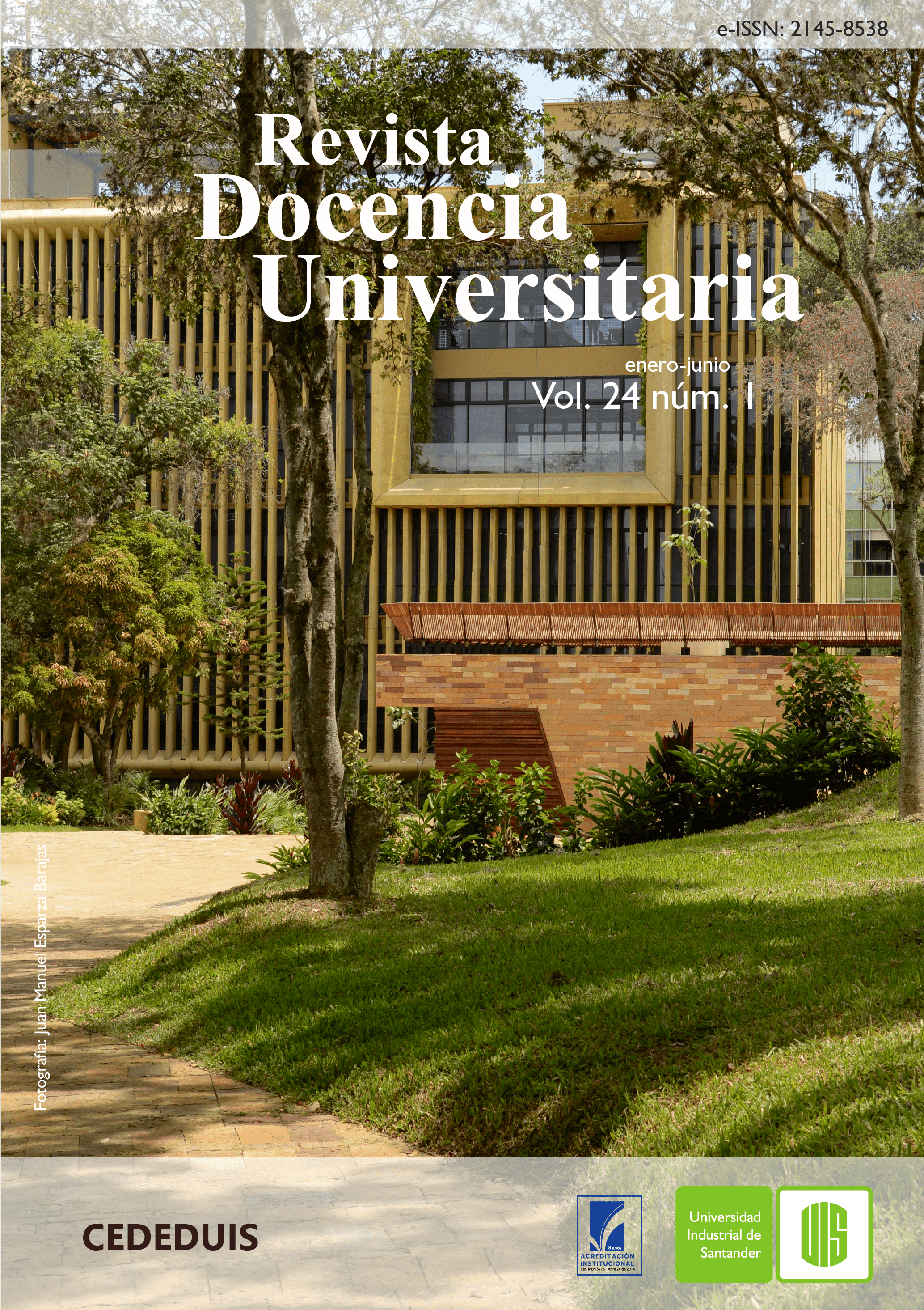Published 2023-06-30
Keywords
- Philosophy teaching,
- Cinema,
- Cultural industry,
- Higher education
How to Cite
Copyright (c) 2023 Revista Docencia Universitaria

This work is licensed under a Creative Commons Attribution 4.0 International License.
Abstract
This research aims to demonstrate the way in which commercial cinema has the ability to enhance the learning of philosophical work in higher education. To achieve this objective, the article has three moments; the first, which delves into the concept of commercial cinema as kirsch or pop cinema that reflects elements of the social, political, etc., unconscious of society; the second, which exposes what is understood as philosophy and teaching of philosophy in this article, taking into account the impossibility of reaching a final answer about what these two concepts are and; Finally, the way in which Kirsch cinema, due to its mass nature and intimately linked to the phenomena of existence due to the commercial and ideological psychology behind it, is exposed, allows a pedagogy of the concept that makes teaching to philosophize an experimental task.
Downloads
References
- Almeyda, J. (2020). Aristóteles y Tomás de Aquino: un análisis en torno a la polis y la res publica. Revista Filosofía UIS, 19(1), 35-58. https://doi.org/10.18273/revfil.v19n1-2020011
- Adorno, T. (2004). Teoría estética. (J. Navarro, trad.). Akal.
- Adorno, T. y Daniel, J. (1989-1990). On jazz. Discourse, 12(1), pp. 45-69.
- Adorno, T. y Horkheimer, M. (1998). Dialéctica de la ilustración. (J. Sánchez, trad.). Trotta.
- Badiou, A. (2004). El cine como experimentación filosófica. En: G. Yoel, Pensar el cine 1:imagen, ética y filosofía (pp. 23-35). Manantial.
- Benjamin, W. (1987). Dirección única. (J. Solar y M. Allendesalazar, trads.). Alfaguara.
- Benjamin, W. (2003). La obra de arte en la época de su reproductividad técnica. (A. Weikert, trad.). Ítaca.
- Benjamin, W. (2008). Tesis sobre la historia y otros fragmentos. (B. Echeverría, trad.). Editorial Ítaca.
- Bourdieu, P. (2010). El sentido social del gusto. Elementos para una sociología de la cultura. (A. Guiérrez, trad.). Editorial Siglo XXI.
- Cadús, R. (2020). Filosofía del cine. El pensamiento por otros medios. Eidos, (33), pp. 319-347.
- Danto, A. (2013). Qué es el arte. (I. García, trad.). Paidós.
- Deleuze, G. y Guattari, F. (1997). ¿Qué es la filosofía? (T. Kauf, trad.). Anagrama.
- Deleuze, G. y Guattari, G. (2000). Mil mesetas. Capitalismo y esquizofrenia. (J. Vázquez, trad.). Pre-Textos.
- Dorfman, A. y Matterlart, A. (1979). Para leer al pato Donald. Comunicación de masa y colonialismo. Editorial Siglo XXI.
- Duarte, R. (2012). El cine en la enseñanza de la filosofía. Aproximaciones pedagócicas entre Cine y Filosofía. LÓGOI. Revista de Filosofía, (22), pp. x-xx.
- Embolic, Grup. (1998). Cómo enseñar filosofía con la ayuda del cine. Comunicar, (11), pp. 76-82.
- Foucault, M. (2000). Poderes y estrategias. En Un diálogo sobre el poder y otras conversaciones. (M. Morey, Trad., pp. 73-86). Alianza Editorial.
- Freud, S. (1975a). La interpretación de los sueños (primera parte). (J. Etcheverry, trad.). En: Obras completas IV. Amorrortu.
- Freud, S. (1975b). La interpretación de los sueños (segunda parte). (J. Etcheverry, trad.). En: Obras completas V. Amorrortu.
- Freud, S. (1975c). Esquema del psicoanálisis. (J. Etcheverry, trad.). En: Obras completas XXIII (pp. 133- 210. Amorrortu.
- Galazzi, L. (2012). Mirando conceptos: el cine en la enseñanza de la filosofía. Libros del Zorzal.
- Hadot, P. (2006). Ejercicios espirituales y filosofía antigua. (J. Palacio, trad.). Siruela.
- Han, B. (2020). La desaparición de los rituales. Una topología del presente. (A. Ciria, trad.). Herder.
- Hegel, G. (1968). Filosofía del derecho. (A. Mendoza, trad.). Editorial Claridad.
- Hegel, G. (2010). Fenomenología del espíritu. (A. Gómez, trad.). Abada Editores.
- Heidegger, M. (1994). Aletheia (Heráclito, fragmento 16). En: Conferencias y artículos (pp. 225-274). Serbal.
- Jameson, F. (1992). O inconsciente político. A narrativa como ato socialmente simbólico. (V. Siqueira, trad.). Editora Ática.
- Jung, C. (2003). Arquetipos e inconsciente colectivo. (M. Murmis, trad.). Paidós.
- Kant, E. (1992). Crítica de la facultad de juzgar. (P. Oyarzún, trad.). Monte Ávila Editores.
- Maldonado, J. (2009). La pedagogía del concepto. Revista filosofía UIS, 8(2), pp. 33-44.
- Marcuse, H. (1983). Eros y civilización. (J. García, trad.). Sarpe.
- Marx, K. (1982). «De la crítica de la filosofía del Derecho de Hegel». Trad. Wenceslao Roces. En: Escritos de juventud (pp. 319-750). Fondo de Cultura Económica.
- Nietzsche, F. (2006). La voluntad de poder. (A. Froufe, trad.). EDAF.
- Searson, H. (2019). Star Wars and The Hero With a Thousand Faces. Why does Joseph Campbell’s influence on Star Wars matter?. En 25YL: https://25yearslatersite.com/2019/12/13/star-wars-the-hero-with-a-thousand-faces/
- Sontag, S. (2005). Notas sobre lo camp. (H. Vázquez, trad.). En: Contra la interpretación (pp. 355-376). Alfaguara.
- Sorfa, D. (2016). What is film-philosophy. Film-philosophy, 20(1), 1-5.
- Cavell, S. (1979). The world viewed. Reflexions on the ontology of film. Harvard University Press.
- Woodley, D. (2015). Globalization and capitalist geopolitics sovereignty and state power in a multipolar world. Routledge:
- Zizek, S. (2012). ¡Bienvenidos a tiempos interesantes!. (V. Ruiz y M. Souza, trads.). Txalaparta.
- Zizek, S. (Guionista). (2006). The pervert's guide to cinema [Película]. ICA Projects
- Zizek, S. (Guionista). (2012). The pervert's guide to ideology [Película]. Zeitgeist Films.
